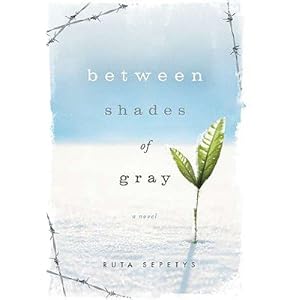Hale, Shannon and Dean Hale. 2010. Calamity Jack. Illustrated by Nathan Hale. New York: Bloomsbury.
Plot summary:
Jack sees himself as a criminal mastermind with more than his share of bad luck. All of his plans and schemes seem to go awry or have unintended consequences. In an effort to make his mother proud, he plans to quit his wicked ways after one final score. When the beanstalk mishap results in the death of a giant, Jack must flee his home. He returns some time later with his friend Rapunzel to discover that Shyport is under the control of Blunderboar the giant who may be in league with the ant people to keep the city under control. With the help of Freddie, a journalist and collector of gadgets and Jack's old partner in crime Prudence the pixie, Jack and Rapunzel must put a stop to Blunderboar's reign and save Jack's mother, proving once and for all that Jack can live up to family expectations.
Analysis:
Jack narrates the graphic novel in boxes of text that fill in the gaps of dialogue and drawing, describing the capers of his childhood and his descent into a life of petty crime. Fantastical creatures and characters from traditional literature appear throughout the story. In fact, Jack will be known to readers as the folktale character who climbed a beanstalk to steal from a giant. Rapunzel has had a haircut but keeps her long locks to use as tools or weapons as needed. The blending of familiar characters into a new and inventive story adds interest.
Visually the story is vivid and full of movement, and the appearance of the characters gives an impression of their nature, attractive heroes and heroines with the bad guys disfigured or misshapen. The varying sizes of the panels enables the illustrator to show fine details or to convey the size and magnitude of the scenes and characters.
Reviews & Awards:
Junior Library Guild Selection
2011 YALSA Great Graphic Novel
SLJ Best Comic for Kids 2011
Horn Book review: "The swashbuckling plot shines in the graphic-novel format... this steampunk-flavored fairy tale will appeal to boy-, girl-, reluctant- and eager readers alike."
Kirkus Reviews: "something for everyone... Readers will relish this gleeful mix of fairy tale, adventure and romance."
Connections:
- Display with other graphic novels that draw from traditional literature including Rapunzel's Revenge, Cinderlla: the Graphic Novel, and Trickster: Native American Tales: a Graphic Collection
- Engage students in creating their own graphic re-tellings of familiar stories.
- Explore the steampunk elements of the illustrations and make connections to other examples of steampunk motif in books and movies.
- Other books by the author:
Hale, Shannon. 2003. The goose girl. New York: Bloomsbury.
Hale, Shannon. 2004. Enna burning. New York: Bloomsbury.
Hale, Shannon. 2005. Princess Academy. New York: Bloomsbury
Hale, Shannon. 2006. River secrets. New York: Bloomsbury
Hale, Shannon. 2007. Book of a thousand days. New York: Bloomsbury.
Hale, Shannon. 2009. Forest born. New York: Bloomsbury.








